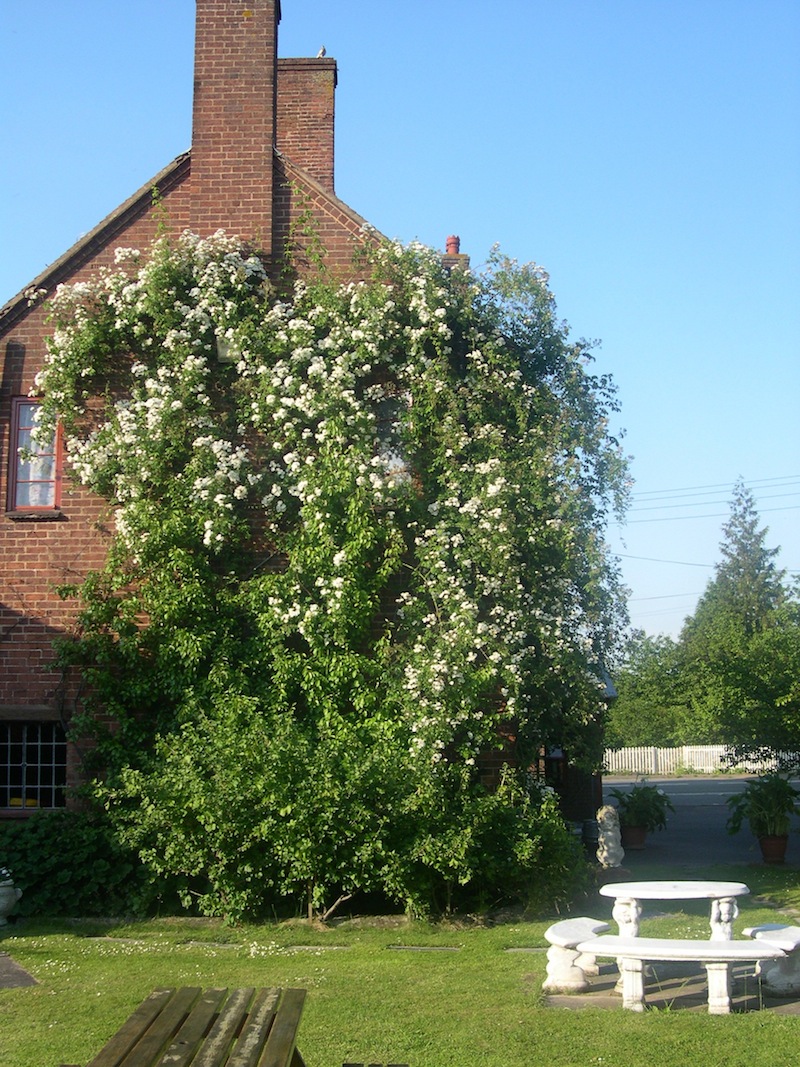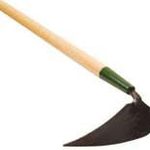
Photo/Illustration: Paul Zimmerman Roses

Photo/Illustration: Paul Zimmerman Roses
Most rose care books recommend removing old leaves on your roses either over the winter or right after pruning. The thinking is that doing so also removes any disease spores that may linger over the winter on the foliage.
It’s sound thinking and I feel a good idea. On living foliage fungal spores like blackspot can over winter, only to remerge the following spring. Removing the leaves and getting them out of the garden simply means less fungal spores in spring when the roses burst back into growth.
This is easy to do when pruning hybrid tea roses in the classic style. You simply prune them down to 18 inches or so and then pick off what few leaves remain. But, today’s modern shrub roses (and many old roses) don’t get cut back hard aka the classic hybrid tea method. Instead, after things like dead and weak canes are removed, they are simply shaped into the desired size for that spot in the garden. Of course coupled with their preferred mature size.
This makes pruning easier because there is less to cut, but it makes leaf stripping a whole lot harder because there are a lot of leaves left. Stripping all those leaves by hand does not fit into the concept of easy care shrub roses. Not to mention try doing that on a large climbing rose!
Thankfully there is an easier way. Burn them off.
No, not with a torch or by setting the rose on fire!
Instead use a product that should be part of your winter pruning regime anyway. Dormant Lime and Sulfur Spray coupled with Horticultural Oil.
When used together on just pruned roses they kill any remaining fungal spores. The sulfur does the killing and the oil makes sure it sticks to the plant so it can do its job. Sulfur by itself can also be used during the growing season to help get a fungal outbreak under control and you can read about that here in a previous post. Note the one thing I warn against when using it during the growing season is to do it on a cloudy day because it, in combination with direct sun, can burn the leaves.
But now we can harness that power for good!
After you finish your pruning, mix the sulfur and oil together as per directions on the bottle. Then spray it all over the roses, making sure to get the leaves really covered. Most importantly, make sure the sun is out and high in the sky. Once the sulfur and oil coat the leaves the sun will burn them and they will simply fall off. If they don’t all fall off you can apply it again in a few weeks and that should get the rest of them.
You can also do this well before pruning season if you want to get the leaves off so the winter winds don’t use them as sails and snap canes. Anytime after the roses go dormant is fine.
Since using the sulfur and oil is something you should do anyway, you aren’t adding to your work load. Doing it while the sun is out combines two jobs and proves as with so many things – timing is everything!
Happy Roseing
Paul
Fine Gardening Recommended Products

Dewit 3-Piece Tool Gift Set with 3-Tine Cultivator, Forged Trowel and Forged Hand Fork
Fine Gardening receives a commission for items purchased through links on this site, including Amazon Associates and other affiliate advertising programs.

Long Handle EZ-Digger
Fine Gardening receives a commission for items purchased through links on this site, including Amazon Associates and other affiliate advertising programs.

Spear & Jackson 4930FZ Razorsharp Telescopic Tree Pruner
Fine Gardening receives a commission for items purchased through links on this site, including Amazon Associates and other affiliate advertising programs.


















Comments
Dormant oil spray is the way to go. It smothers eggs of insects and spores of mold and is just a good all round practice.
http://www.arthur-in-the-garden.com
Paul, I always question when my roses go dormant. Here in Massachusetts Z6B along the coast, we may get soft freezes (32-28*) then a series of days mid to high 40's edging into the 50's with sun. After these soft freezez I've seen my hydrangea and roses spawn new leaves! So I usually wait until we have freezing temps every night and highs into the 30's and low 40's and declare dormancy - usually followed with a weekend of frozen finger tips as I shovel compost/humus piles on my roses and then spray a Bordeaux mix of copper sulfate then wait a week or two and spray dormant oil. But some years we either go from weeks of on/off soft freezes and other years where out of no where the weather turns frigid during a mild fall. So my question is - your lime/sulfur - dormant mix approach beats mine but given the extreme variations in our temps, when is the best time to spray? Sometimes I think the more I know, the less I know for certain...lol
Quite honestly I wouldn't worry about it. Just hit them when you feel they are fully dormant. If they wake up for short while it won't matter.
This is one of those moments when I like tell people to just trust their gardener's instincts. Know less and trust more. LOL!
Paul
Log in or create an account to post a comment.
Sign up Log in